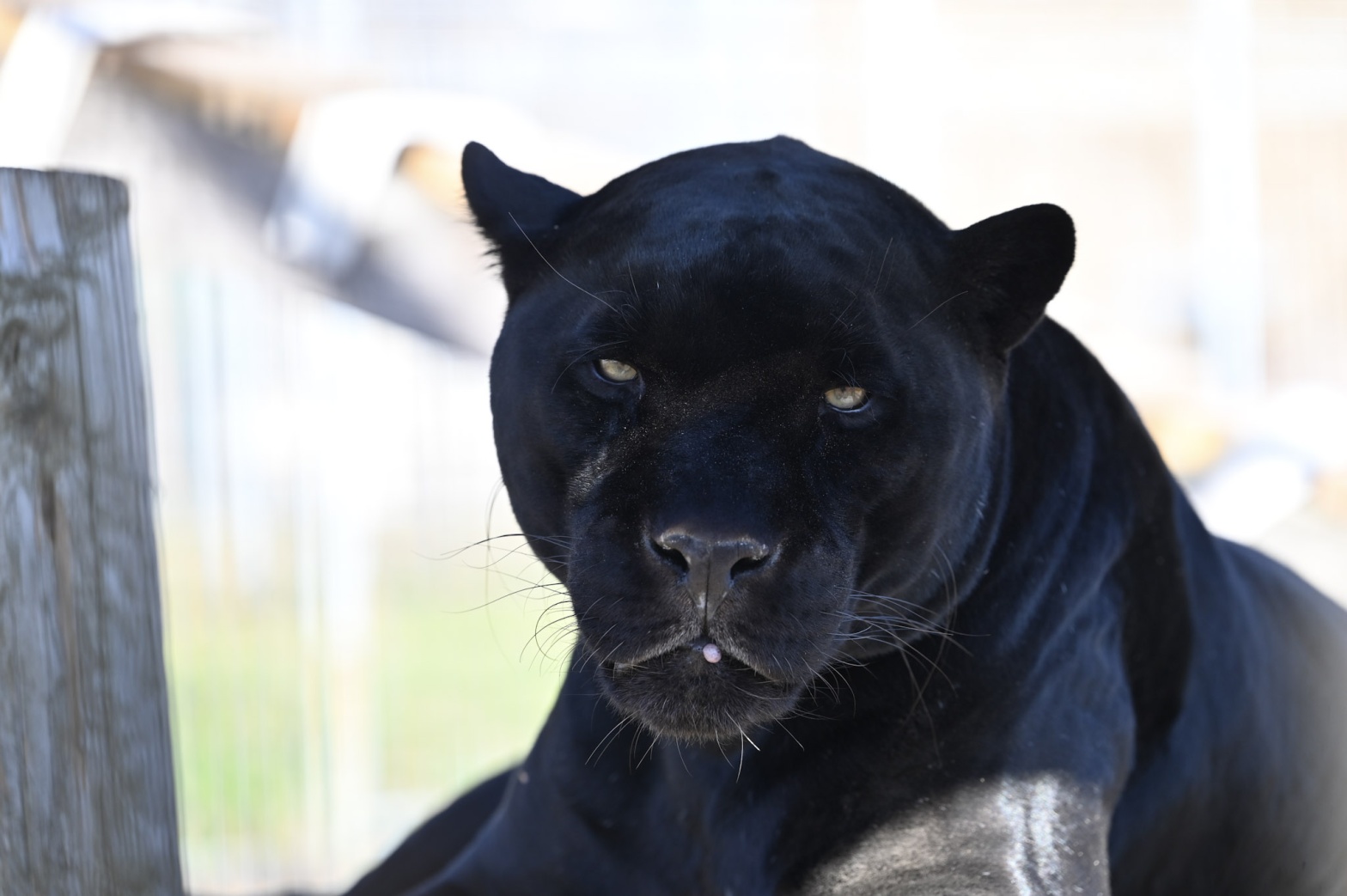
Jaguars are compelling animals. The word ‘jaguar’ derives from the indigenous word ‘yaguar,’ which means ‘He who kills with one leap.’ With their powerful teeth and claws, they are able to take down prey three to four times their size. They have the strongest jaws of any other big cat, with a bite force of about 1,500 PSI. (Their bite force can bite through a crocodile skull!) They are the third biggest cat in the world, just after the tiger and lion.
These apex predators are found throughout South America, their stronghold being in Brazil. They once could be found in the Southwestern United States, all the way into Northern Argentina. Unfortunately, they have been eliminated from over half their historic range due to habitat loss and human-wildlife conflict. There are an estimated 170,000 remaining wild Jaguars, but it’s hard to be sure because they are so elusive.
Jaguars are solitary animals, usually avoiding one another. They often live near lakes, rivers, and wetlands because they are excellent swimmers. Jaguars will prey on almost anything, from crocodiles to Capybaras to monkeys. They are not afraid to take on even South America’s largest animal, the Tapir. Jaguars are known to prey on more than 80 different species!
Jaguars vs. Leopards
Leopards are often confused with the Jaguar, but there are some key differences between the two. For example, Leopards and Jaguars have different spots or rosettes. If you look at a jaguar rosette, you’ll notice a spot in the middle. You could say that Jaguars have “spotted spots.” Leopards do not have these internal spots within their rosettes. Jaguars also have a stockier build, and their heads have a distinctive “blockiness.”
Sawing is a form of jaguar communication. It sounds similar to the sawing of wood, only the saw is moving in one direction. It mainly occurs before dawn or in the early evenings. Leopards also saw!
Both jaguars and leopards can be melanistic. Melanism is a genetic mutation that makes them appear solid black. However, if you look closely, you will see their rosettes. This can often lead them to be called black panthers. Contrary to popular belief, a black panther is not its own species, but it has become a nickname for black cats. Here at Turpentine Creek, we have a black leopard and a black jaguar! (As well as a yellow leopard.)
Threats
Unfortunately, Jaguars are currently facing many new threats in South America due to high deforestation rates. Logging and space for cattle ranching play a significant role in this. It results in habitat loss and isolates their populations, making it more difficult for them to breed. Where there is a loss of habitat, there is also a loss of prey, making it harder to find food. With food being scarce, Jaguars will go after livestock, which ultimately leads to them being killed by cattle ranchers.
Next time you visit Turpentine Creek Wildlife Refuge be sure to look for our one and only black jaguar, Bagheera! Also look for our black leopard, Spyke, and see if you are able to tell the difference between the two!
